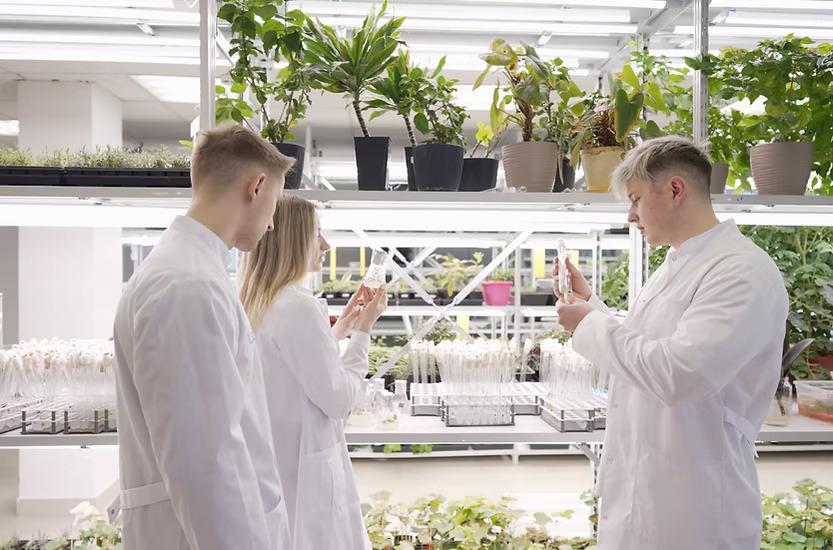Fertilizers play a critical role in modern agriculture, ensuring food security and boosting crop yields to meet the demands of a growing global population. Among the key players in this sector, top fertilizer companies are at the forefront, supplying essential nutrients to millions of hectares of farmland worldwide. While these companies contribute significantly to agricultural productivity, their environmental footprint raises concerns that warrant careful consideration. Understanding the ecological consequences of fertilizer production and usage is essential for promoting sustainable farming practices.
The Scale of Fertilizer Production
The global fertilizer industry produces millions of tons of nitrogen, phosphorus, and potassium-based fertilizers annually. These nutrients are vital for plant growth, but their extraction and manufacturing processes can consume significant natural resources. For example, nitrogen fertilizers are often synthesized using natural gas, while phosphate fertilizers require mining of finite mineral deposits. Large-scale operations by leading fertilizer companies amplify these impacts due to the sheer volume of production.
Greenhouse Gas Emissions
One of the most significant environmental impacts of fertilizer production is the emission of greenhouse gases (GHGs). Nitrogen-based fertilizers, in particular, contribute to the release of nitrous oxide (N₂O), a potent greenhouse gas with a global warming potential nearly 300 times that of carbon dioxide. Top fertilizer companies often operate industrial facilities that release carbon dioxide and other pollutants during manufacturing, transportation, and storage. These emissions contribute to climate change, making it imperative for the industry to adopt cleaner technologies and energy-efficient processes.
Soil and Water Pollution
Excessive use of chemical fertilizers can lead to soil degradation and water contamination. When applied in large quantities, nutrients such as nitrogen and phosphorus may leach into groundwater or run off into rivers and lakes, causing eutrophication. This nutrient overload promotes excessive growth of algae, depleting oxygen levels in water bodies and harming aquatic life. Furthermore, the imbalance of soil nutrients over time can reduce fertility, forcing farmers to rely on even more fertilizers, perpetuating a cycle of environmental degradation.
Air Quality Concerns
Apart from greenhouse gases, fertilizer manufacturing and application release ammonia and particulate matter into the atmosphere. These pollutants can contribute to acid rain, respiratory problems in humans, and damage to nearby vegetation. Top fertilizer companies are increasingly under scrutiny to monitor and mitigate these emissions, implementing measures such as scrubbers, better storage techniques, and optimized fertilizer formulations to reduce air quality impacts.
Energy and Resource Consumption
The production of synthetic fertilizers is highly energy-intensive. Nitrogen fertilizers, for instance, require high temperatures and pressures for synthesis, consuming vast amounts of fossil fuels. Phosphate and potash extraction involve mining processes that disrupt landscapes and consume water resources. As a result, the operations of top fertilizer companies significantly influence natural resource depletion and environmental sustainability. Reducing energy consumption and sourcing renewable energy for production are essential steps toward mitigating these impacts.
Advances in Sustainable Practices
The growing awareness of environmental issues has prompted the fertilizer industry to explore sustainable practices. Many top fertilizer companies are investing in research and development to create eco-friendly formulations, slow-release fertilizers, and enhanced efficiency products. Precision agriculture techniques, including soil testing and targeted fertilizer application, help minimize excess usage and reduce environmental damage.
Integrated Nutrient Management
Integrated nutrient management (INM) is an approach that combines chemical fertilizers, organic inputs, and biofertilizers to optimize soil fertility while minimizing environmental harm. By integrating natural and synthetic sources of nutrients, farmers can reduce dependency on large quantities of chemical fertilizers, lowering greenhouse gas emissions and preventing nutrient runoff. This strategy represents a practical pathway for top fertilizer companies to reduce their ecological footprint while supporting sustainable agriculture.
Regulatory Pressures and Industry Responsibility
Government regulations play a significant role in shaping the environmental practices of fertilizer companies. Stricter emission standards, wastewater management protocols, and monitoring of nutrient application rates encourage companies to adopt cleaner and safer production methods. Moreover, industry accountability and transparent reporting are becoming critical for maintaining public trust and meeting sustainability goals. Consumers, policymakers, and environmental organizations increasingly expect top fertilizer companies to demonstrate responsible practices that align with global environmental objectives.
Role of Innovation in Reducing Environmental Impact
Innovation in the fertilizer sector is crucial for mitigating environmental harm. Developing technologies such as nitrogen inhibitors, bio-stimulants, and precision application systems can significantly reduce nutrient losses to the environment. Additionally, adopting circular economy principles—like recovering nutrients from agricultural waste or industrial byproducts—can enhance sustainability. Companies investing in such solutions not only contribute to environmental protection but also create opportunities for long-term economic benefits.
Challenges in Transitioning to Sustainability
Despite progress, challenges remain in reducing the environmental impact of fertilizer companies. Balancing productivity demands with ecological preservation is complex, especially in regions with intensive farming practices. High costs of sustainable technologies, limited awareness among farmers, and inconsistent regulatory enforcement can slow the adoption of eco-friendly practices. Addressing these barriers requires collaboration between governments, research institutions, and industry leaders to ensure that environmental and agricultural goals are met simultaneously.
Final Thought: Embracing Eco-Friendly Fertilizer Production
The environmental footprint of fertilizer production is a pressing concern, given its implications for climate change, soil health, and water quality. While top fertilizer companies continue to supply essential nutrients for global agriculture, their operations inevitably affect natural ecosystems. The path forward lies in adopting innovative and sustainable practices, emphasizing responsible usage, and exploring alternatives such as bio fertilizer production. By integrating organic and chemical approaches, investing in energy-efficient technologies, and promoting nutrient management strategies, the fertilizer industry can achieve a balance between productivity and environmental stewardship, supporting a greener and more sustainable future for agriculture.



